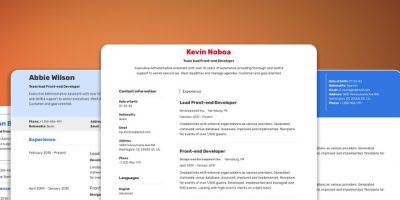Paying for college in the US can sometimes seem overwhelming. The costs of tuition are high, and you also have to pay the costs of living as well. How can you make sure that you have enough to cover both your normal expenses and the costs of attending school? Student loan aid might be the answer. The key with student loans is to borrow what you need to pay for school, but at the same time, to be able to pay back the money when the time comes. Here’s what you need to know about estimating the costs of tuition and loan payments.
Types of Loan Available
The two main types of loans are federal and private loans. Federal loans are subsidized by the government, while private loans come from private lenders. Most students use federal loans first and then turn to private lenders to get the remaining aid they need. When you apply for federal loans, you’ll first fill out the FAFSA paperwork. Then you’ll look for grants and scholarships. Federal loan aid is paid after you maximize these opportunities.
Depending on where you go to school, you might not have enough federal aid to cover all of your costs. Some students choose to get a part-time job to pay for their needs. If you don’t have the time or ability to have a part-time job, private lenders might be the solution. If you do use a private lender to pay the rest of your tuition costs, you can use a student loan calculator to determine how much you’ll pay monthly depending on what you borrow.
Planning Ahead Before College
If you make a plan before college, you might be able to save yourself thousands in potential student loan debt. Only a portion of families have a college savings account, and it’s a good idea to get started as early as possible to grow over time. This type of account has certain tax advantages and allows students to save over time for college. Despite a relatively low number of families using these types of accounts, half of families have some kind of plan to help their children through college. When you’re determining how much tuition you can pay every year or every month, you’ll need to take your financial situation into account. Whether you’re just graduating high school or going back to school after a long break, these are some of the factors that will matter:
- How much you make on a yearly or monthly basis
- The cost of living, including expenses like groceries and rent
- How much you’re liable for in loan payments
- Whether you are the recipient of any grants or scholarships
- How much supplies and equipment for school cost
The more you’re paying on a month-to-month basis, the less you’ll be able to afford college tuition. Some student loans do cover the cost of tuition in addition to your living expenses.
What Matters to the Cost of College
You might think that tuition is the biggest thing to worry about. Your top schools should have their tuition listed per semester or per course when you look at their websites. Though tuition is a big factor in calculating costs, it’s far from the only one. In fact, fees for school and your living expenses might outstrip the cost of tuition. How are you paying for your lodging? Are you an independent student who lives outside your parents’ household? How much are you making in income per year, if you’re able to work at all? You’ll need to consider the costs of transportation, housing, food, and textbooks. Tuition costs for most schools are flat rates for each semester. If you’re only studying part-time, you might pay for each course individually. When you are an undergraduate, you will be expected to pay the full cost of your tuition at the start of your semester.
Private universities tend to be significantly more expensive than in-state community colleges. But even for community college students, you could end up paying several thousand dollars in combined fees and tuition. The fees will vary depending on the school. If you’re studying on campus, you might need to pay fees to attend events, use the recreation centers, or cover other amenities. There might be fees to use the technology labs and athletic centers, as well as fees for public transit if you don’t have a car.
Certain online classes might have a fee for distance learning. Meanwhile, there might be a lab fee for some science classes. In addition, once you meet the requirements for graduation, your school might ask you to pay a fee to apply for graduation. It’s important to research what fees your college of choice has. These vary wildly depending on the school, its amenities, and its location in the US.












Comments